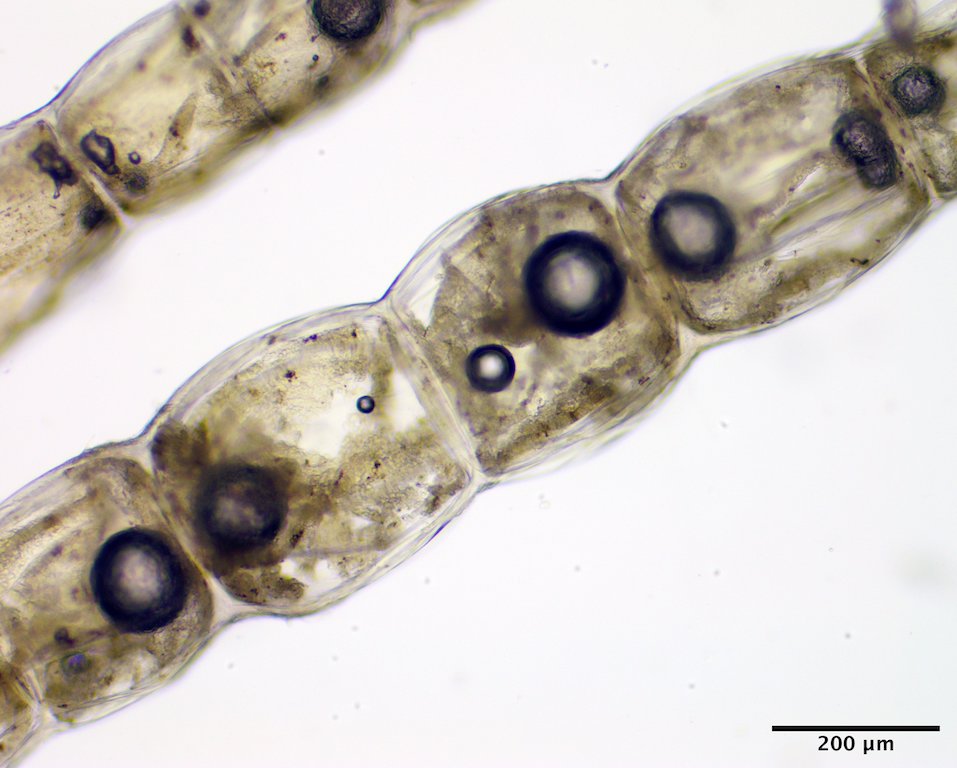This species forms unbranched, relatively stiff and straight, uniseriate filaments 5-15 cm long (Image A). Typically found as turfs (although individual filaments can be found at some locations) of individuals from what appears a common holdfast (Image B), but each erect filament is anchored by its own long basal cell (5-8 X long as wide; Image C). Lower on the filaments cells are cylindrical, square to slightly rectangular in outline, and 130-160 µm wide by 115-232 µm long (Image D) becoming barrel-shaped and 286-340 µm wide by 280-350 µm long mid thallus to the tips (Image E).
We have no genetically verified records of this species, which is true for many Cladophorales. They fail to PCR amplify for the standard organelle markers and nuclear markers must be compared (work in progress). It is possible that this species represents the attached counterpart to the unattached Chaetomorpha linum (O.F.Müller) Kützing, which may be consistent with our preliminary molecular results. More to come on this aspect of the taxonomy. For now this page is based on GWS006028, which was collected from an upper intertidal pool (as is characteristic of this species) from Narragansett, RI.

Image A. Pressed voucher for a collection from an upper intertidal pool on rock, Narragansett, RI (GWS006028).

Image B. Individuals grow in turfs from a compact base (GWS006028).

Image C. Each filament has a distinct basal attachment cell that is 5-8 X longer than wide (GWS006028).

Image D. Cells low on the thallus are cylindrical and square to slightly rectangular in outline (GWS006028).

Image E. Moving toward the apices cells become barrel-shaped (GWS006028).
